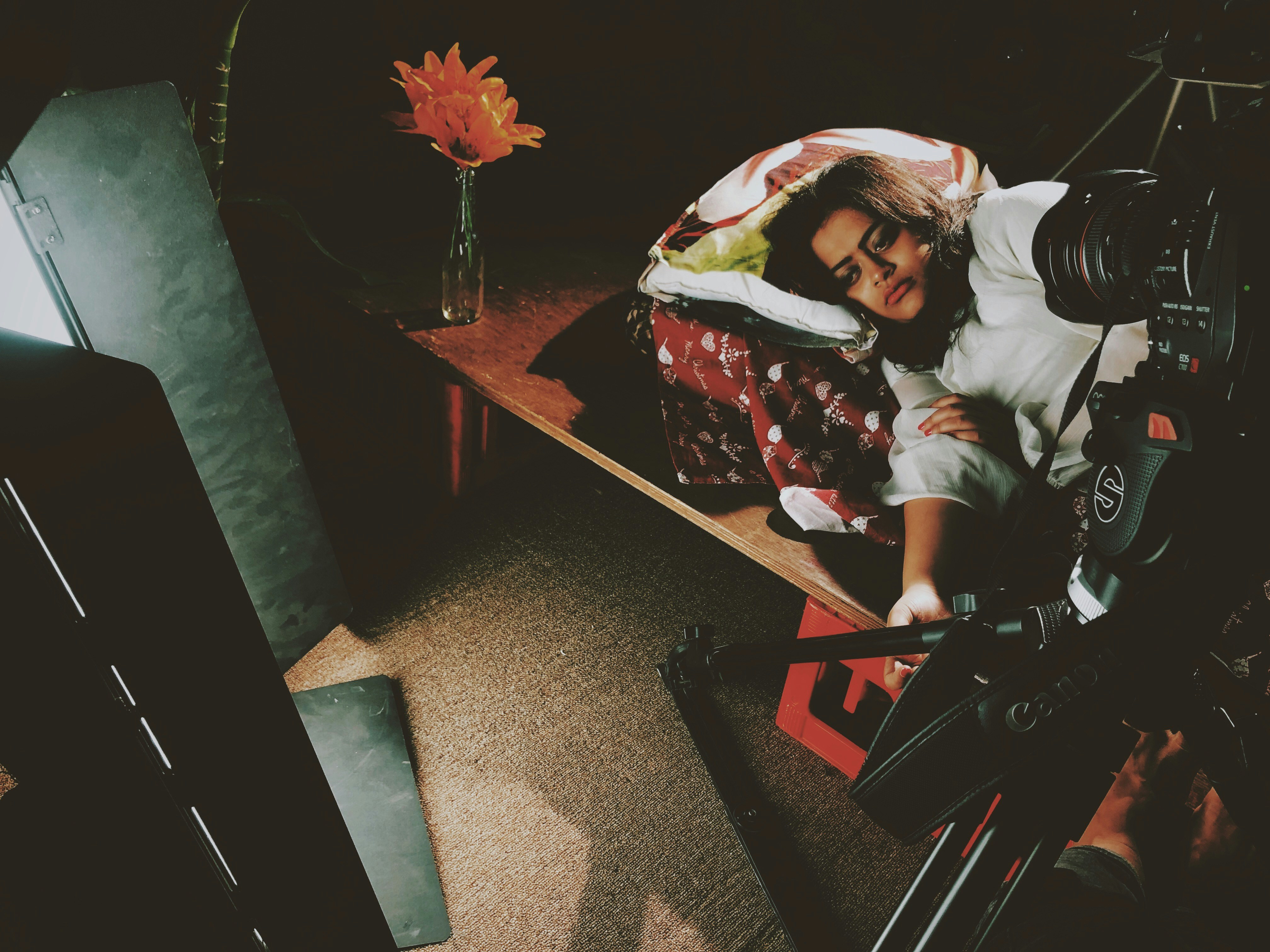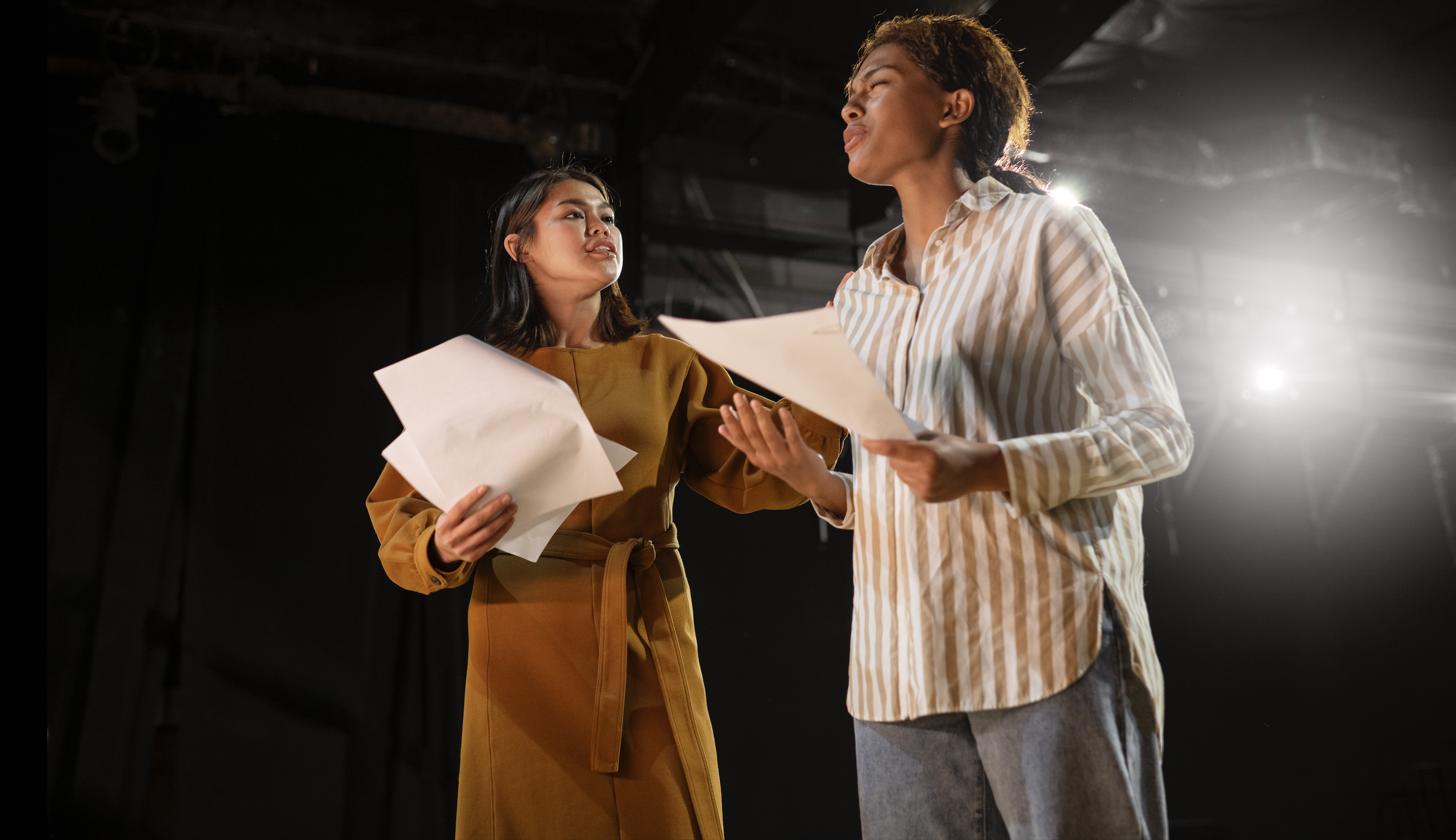11 Essential Improvisation Techniques for Actors
by WriteSeen
Mastering improvisation techniques for actors is indeed a transformative journey in the theatrical world. Whether you're gearing up for an audition or elevating an ongoing project, this guide unveils effective strategies every performer should integrate into their craft.
From embracing the "Yes, And" principle to active listening, explore dynamic methods that enhance creativity and spontaneity. Let’s navigate these essential tools to refine your improvisational prowess and unlock your full potential on stage.
1. Master the "Yes, And" Principle
Embracing the "Yes, And" principle is your first step to creating vibrant and compelling scenes in improv. This rule isn't just about nodding along; it’s about building on your scene partner’s ideas, creating an energetic back-and-forth that propels a narrative forward. By saying "Yes" to an idea, you accept it as part of your shared reality. The "And" allows you to add your own twist, enriching the scene with depth and direction.
- Foster Collaboration: Each interaction becomes a collaborative effort, sparking creativity and preventing any scene from hitting a wall.
- Seamless Storytelling: By continuously adding to the scene, you weave a more intricate and entertaining story.
- Adapt to Unexpected Turns: Embrace change. Surprises aren't setbacks; they're opportunities for exploration and creativity.
Testing this principle in workshops or online platforms like WriteSeen, where peer feedback is at your fingertips, can help you understand its transformative power in real-time. Each exercise gets you one step closer to mastering spontaneity, so every performance feels fresh and genuine.
2. Develop Active Listening Skills
Effective improv requires you to harness the power of active listening, transforming scenes with nuanced reactions and ensuring you don’t miss crucial cues. This skill keeps your interactions genuine and gives you the flexibility to adapt in the moment.
- Engage Fully: Focus intensely on your partners' words and actions to pick up on subtler elements and unspoken cues.
- React Authentically: Your responses should be true to the scene, keeping the interaction fluid and dynamic.
- Improve Timing: By catching every detail, you enhance comedic timing and dramatic delivery.
Participate in listening exercises or group improvisations to elevate your competence in this area. Being alert not only strengthens your scenes but also amplifies the emotional exchanges between you and your peers. This can make all the difference when improvising nuanced characters.
3. Establish Strong Characters
The speed at which you create and adapt characters during improvisation directly affects the scene's vitality. Learn to establish compelling characters swiftly by exploring physicality, voice variations, and personality traits. By doing so, you bring a unique energy and flavor to each performance.
- Craft Distinct Personas: Consider physicality and vocal techniques to differentiate your characters quickly.
- Explore Emotional Depth: Assign a clear intention or emotional drive to each character for more intricate scenes.
- Test Boundaries: Feel free to push your character’s limits to discover idiosyncrasies that make them memorable.
Explore character creation through exercises that push you to adapt rapidly, like those that incorporate new, unexpected situations or traits. This practice can empower you to deliver performances that captivate your audience and leave a lasting impression.

4. Experiment with Status Play
Playing with status is a potent improvisation technique that adds complexity and intrigue to any scene. By understanding and manipulating status dynamics, you can enrich narratives with tension and unexpected twists.
- Establish Hierarchies: Recognize and enact social power dynamics, which can dramatically change interactions.
- Shift Power: Use nonverbal cues like posture and tone to effortlessly transition between high and low status.
- Layer Scenes: Create engaging narratives by throwing status changes into the mix for added conflict or humor.
Focus on exercises that encourage you to shift power dynamics smoothly. Practicing in a space like WriteSeen allows for feedback and growth, giving you the techniques needed for powerful, multi-dimensional performances.
5. Use Object Work for Realism
Effective object work requires strong miming skills to conjure props and surroundings in the audience's mind, heightening the scene's realism and immersion. By mastering object work, you make scenes more tangible and relatable without the need for physical props.
- Precision in Detail: Pay attention to the weight, size, and texture of mimed objects to make them believable.
- Enhance Scene Reality: Use props, or the absence of them, strategically to ground and expand the world you’ve created.
- Maintain Consistency: Keep track of your interaction with imaginary objects to avoid breaking the audience's illusion.
Incorporate regular practice into your routine to fine-tune your object work skills. This detail-oriented approach makes you more adaptable across varying scenarios, strengthening your overall improvisation repertoire.
6. Embrace Emotion Transformation
Versatile emotional expression is vital for an actor to respond authentically to evolving scenes. By learning to transform emotions swiftly, you maintain the audience's interest and enhance the dynamic nature of your performance. This skill allows you to showcase a wide emotional range, adding layers to your character portrayals.
- Explore Full Emotional Range: Practice moving between emotions using techniques like emotional recall or improvisational prompts.
- Instantaneous Shifts: Work on exercises that require quick emotional transitions to prepare for unrehearsed changes.
- Amplify Impact: Use emotional cues to create memorable moments and deepen audience connections.
By honing your emotional transformation skills within a supportive environment like WriteSeen, you gain confidence in your ability to connect viscerally with your audience, no matter how the scene evolves. This preparation equips you to handle shifting dynamics with ease.

7. Incorporate Flashbacks and Cutaways
Integrating flashbacks and cutaways in your improv toolkit can transform a simple scene into a rich, multi-layered narrative. These techniques are not just reserved for filmmakers and screenwriters — they can be a game-changer for improvisers too.
Why Incorporate These Techniques?
- Add Depth to Characters: Flashbacks reveal backstory, deepening audience understanding. They help illustrate why a character behaves a certain way or harbors particular emotions.
- Enhance Narrative Dynamics: Cutaways introduce parallel stories or highlight unseen actions, broadening the scene’s scope and building suspense or humor.
- Encourage Creative Flexibility: Practicing these techniques pushes you to think outside linear storytelling, enhancing your adaptability and quick thinking skills.
Creating Seamless Transitions
To integrate these effectively, clear cues are essential. Transition smoothly between present and past or different locations without losing the audience. This may involve a simple gesture, a distinct voice change, or a specific phrase to indicate the shift. Practicing these cues can transform your performance into a compelling narrative experience.
Bringing techniques like these to the stage requires innovation and a strong sense of storytelling. Always be ready to adapt and refine — improvisation thrives on momentum and collective storytelling.
8. Build Narrative Through Physicality
Improvisation is not just about words — your body is a powerful storytelling tool. Mastering physicality in improvisation can significantly shift how audiences perceive your narrative.
The Power of Body Language
- Communicate Without Words: Gestures and movements can express emotions or intentions you might not convey verbally, making your performance more relatable and immersive.
- Define Spaces and Objects: Use body positioning to suggest settings and props, crafting a convincing environment even without elaborate sets.
- Character Distinction: Unique mannerisms and physical quirks add layers to characters, making them memorable and authentic.
Apply the Concepts
Regularly practice these skills, perhaps through dedicated workshops or peer-driven feedback. Use Polaroid training sessions to capture snapshots of movements, analyzing how they contribute to the scene. You can also engage in exercises at WriteSeen, where industry professionals might offer insights on refining your physical portrayal of characters.
By focusing on physicality, you not only elevate your improvisation but also enrich the creative collaborations you take part in. Every motion tells a story—ensure it adds value.
9. Explore Genre Improvisation
Genre improv lets you venture beyond traditional techniques, allowing you to develop a unique range of styles and broaden your repertoire. It challenges you to adapt, innovate, and immerse audiences in diverse worlds.
The Benefits of Genre Exploration
- Versatile Storytelling: Mastering various genres equips you to switch storytelling styles with ease, whether it's comedy, drama, or science fiction.
- Increased Creative Range: Each genre has distinct tropes and techniques. Mastering them enhances your adaptability and broadens your creative palette.
- Role Expansion: By exploring genres, you inhabit roles you might not typically choose, enriching your conscious and unconscious acting choices.
Try incorporating improv sessions that focus on specific genres, experimenting with their associated styles and conventions. Collaborative platforms like WriteSeen offer a safe space for such explorations — exchange ideas with peers or gain valuable feedback from industry professionals.
By stepping into new genres, you cultivate a varied skill set that empowers your overall artistic growth and enhances your on-stage versatility.
10. Engage in Quick Thinking Exercises
To thrive in improvisation, rapid thinking is crucial. Actors must swiftly react to unexpected turns, ensuring scenes flow smoothly and maintain their energy.
Quick Thinking for Improvisation Excellence
- Enhances Real-Time Adaptability: Spontaneity leads to genuine interactions and fresh, engaging scenes.
- Builds Mental Agility: Regular exposure to quick-thinking scenarios sharpens reaction times and decision-making.
- Reduces Hesitancy: The more you practice, the lesser your tendency to pause or overthink during performances.
Blueprints for honing these skills include simple word association games, which bolster mental agility. Incorporating practice drills within WriteSeen’s secure environment allows you to expand your boundaries with confidence, taking your improv to the next level.
Practicing quick thinking exercises empowers you to meet any creative challenge, transforming you into an agile and versatile performer at the peak of your craft.
11. Foster a Collaborative Environment
Collaboration in improvisation fuels creativity and builds trust within an ensemble. A supportive atmosphere encourages openness and innovation, essential qualities for any creative endeavor.
Building a Collaborative Space
- Promote Open Communication: Share ideas freely and listen actively, ensuring everyone's contributions are valued.
- Encourage Risk-Taking: In a trust-filled environment, actors feel safe experimenting with bold choices, leading to richer narratives.
- Foster Group Cohesion: Participate in group exercises to build rapport, ensuring seamless cooperation during performances.
Work together to establish habits that bolster your collective performance. Through platforms like WriteSeen, creators have the opportunity to exchange constructive feedback, enriching their experience and enhancing collaborative dynamics.
Remember, the ensemble is a living, breathing entity. Nurture it, and it will elevate your artistry beyond personal capabilities.
Conclusion: Elevate Your Improvisation Skills and Own the Stage
Mastering improvisation techniques for actors isn’t just about being quick on your feet—it’s about embracing creativity, trust, and adaptability. From saying "Yes, And" to exploring genre improv and status play, each technique equips you with the tools to craft compelling, unscripted moments that resonate with your audience.
Theatre and film demand performers who can think fast, listen deeply, and commit fully to every scene. Whether you're refining your skills in a workshop, testing new characters in a rehearsal, or engaging in quick-thinking exercises on platforms like WriteSeen, every step you take strengthens your ability to perform with confidence and spontaneity.
So, challenge yourself. Experiment with these techniques. Step into the unknown with courage. The best performances aren’t just delivered—they’re discovered in the moment.
TAGS